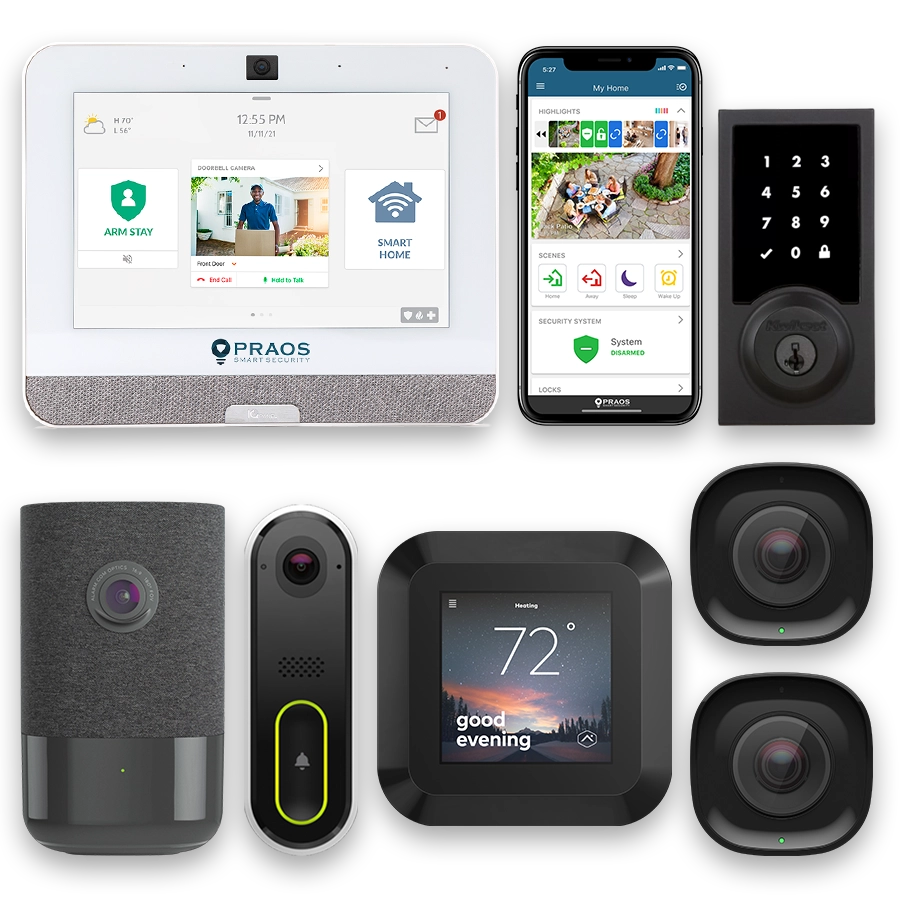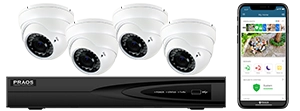- Overview of Business Security in Richmond: Current Landscape and Challenges
- The Evolution of Surveillance Systems: From Analog to Wireless Monitoring
- Benefits of Wireless Monitoring for Businesses in Richmond
- Advanced Surveillance Technologies: Tools and Features Enhancing Security
- Implementing Wireless Monitoring and Surveillance: Best Practices and Considerations
- Case Studies: Success Stories of Richmond Businesses Utilizing Wireless Monitoring
- Future Trends and Innovations in Business Security Systems
Overview of Business Security in Richmond: Current Landscape and Challenges
Richmond, Virginia, is a vibrant business hub with a diverse range of industries including finance, healthcare, manufacturing, and retail. As businesses grow and evolve, the need for robust security measures becomes increasingly crucial. The current landscape of business security in Richmond is marked by both traditional security systems and the adoption of modern technologies.
Richmond’s security concerns are influenced by various factors including its urban setting, the density of commercial establishments, and the ongoing threat of cybercrime. According to the Federal Bureau of Investigation (FBI), Richmond, like many cities, faces challenges such as property crimes, which include burglary and vandalism. These crimes underscore the need for reliable security solutions that not only deter criminal activities but also provide real-time monitoring and evidence collection.
Traditional security systems, such as on-site guards and analog surveillance cameras, have limitations. These can include restricted coverage areas, higher operational costs, and less effective real-time monitoring capabilities. In contrast, modern wireless monitoring systems offer greater flexibility and advanced features, making them an increasingly popular choice among Richmond’s businesses.
Reports from the Richmond Police Department indicate that businesses with integrated surveillance and alarm systems experience lower incident rates. This is attributed to the deterrent effect of visible security measures and the improved response times facilitated by advanced monitoring technologies.
Additionally, the Richmond Chamber of Commerce highlights the importance of security in fostering a safe business environment. It emphasizes that advanced surveillance systems not only protect assets but also create a sense of safety among employees and customers, which is essential for business continuity and reputation.
In conclusion, the current landscape of business security in Richmond necessitates a strategic approach that leverages modern technologies. By understanding the local security challenges and the growing trend towards advanced surveillance systems, businesses can take proactive steps to enhance their security measures, ensuring a safer and more secure operational environment.
The Evolution of Surveillance Systems: From Analog to Wireless Monitoring
The evolution of surveillance systems has undergone significant changes over the years, particularly with the shift from analog to wireless monitoring. Initially, surveillance systems relied on analog technology, which involved the use of closed-circuit television (CCTV) cameras connected by coaxial cables. These systems were limited by their low image quality, extensive wiring requirements, and vulnerability to physical tampering.
The next step in the evolution was the transition to digital video recording (DVR) systems. These systems improved image quality and permitted easier data storage and retrieval. DVR technology also allowed for the integration of more advanced features, such as motion detection and remote viewing capabilities.
Wireless monitoring represents the latest advancement in surveillance technology. With the development of high-speed internet and wireless communication protocols, businesses can now deploy surveillance systems that utilize Internet Protocol (IP) cameras. These cameras transmit data wirelessly to networked storage systems, thereby eliminating the need for extensive cabling and reducing installation costs.
Wireless monitoring systems provide several advantages. First and foremost, they offer superior image quality, often in high definition (HD) or even ultra-high definition (4K). This improvement allows for better identification of individuals and objects within the surveillance field. Additionally, wireless systems provide greater flexibility in camera placement, as they are not constrained by the need for wired connections.
Another significant benefit of wireless monitoring is scalability. Businesses can easily expand their surveillance coverage by adding more cameras without the need for complex rewiring. This is particularly useful for growing businesses or those operating in dynamic environments where security needs may change over time.
Moreover, wireless monitoring enhances data security. Modern systems employ advanced encryption techniques to protect data transmissions from unauthorized access. This ensures that sensitive surveillance footage is accessible only to authorized personnel, mitigating the risk of data breaches.
Cloud-based storage is another critical component of wireless monitoring systems. By storing footage in the cloud, businesses can access their surveillance data from anywhere with an internet connection. This facilitates remote monitoring and allows for quick retrieval of historical footage if an incident occurs.
Wireless monitoring also supports the integration of advanced analytics. Systems equipped with artificial intelligence (AI) can perform real-time analysis of video feeds to detect suspicious activities, recognize license plates, or even conduct facial recognition. These capabilities enhance the proactive security measures businesses can employ.
Lastly, wireless monitoring systems generally offer user-friendly interfaces, making it easier for business owners and security personnel to manage and monitor their security infrastructure. This ease of use can lead to more effective surveillance operations and quicker responses to potential security threats.
In summary, the progression from analog surveillance to wireless monitoring has introduced numerous improvements in image quality, flexibility, scalability, data security, and analytical capabilities. Businesses in Richmond can benefit significantly from adopting these advanced technologies to safeguard their premises and assets.
Benefits of Wireless Monitoring for Businesses in Richmond
Wireless monitoring systems offer numerous benefits for businesses in Richmond, ensuring robust and reliable security. One of the primary advantages is the reduction of physical vulnerabilities associated with traditional wired systems. Without the need for cables, wireless systems eliminate the risk of tampering that can compromise wired infrastructure.
These systems are also highly scalable, allowing businesses of all sizes to upgrade or expand their security measures easily. This scalability is particularly beneficial for growing enterprises that need to adapt their security protocols dynamically. The installation process is often quicker and less disruptive, as it involves fewer physical modifications to the premises.
At Praos, our aim is to deliver exceptional security solutions that meet the specific needs of Richmond’s businesses. With years of local expertise and a commitment to award-winning service, we ensure that our clients receive top-notch protection. Here’s a quick overview of what new customers can expect:
| Feature | Details |
|---|---|
| Equipment | FREE with a monitored new system plan |
| Installation | FREE with a monitored new system plan |
| Monthly Rates | Starting at just $19.95/mo |
Praos also emphasizes the importance of a connected home experience. Using a single app, business owners can manage security, automation, and surveillance, providing comprehensive control over their security environment. This integration not only enhances convenience but also ensures a thorough oversight of all security components.
Another significant benefit of wireless monitoring is the ability to access real-time updates and alerts. In case of an incident, businesses can receive notifications immediately, enabling swift action to prevent or mitigate potential damage. Remote monitoring capabilities ensure that even when business owners are offsite, they can keep a watchful eye on their property.
Additionally, wireless systems typically offer advanced features such as high-definition video surveillance, motion detection, and night vision. These features improve the overall security landscape, making it easier to identify and respond to threats. With Praos, we customize these technologies to align with each business’s unique security requirements, providing tailored solutions that offer peace of mind.
By choosing wireless monitoring systems, Richmond’s businesses not only enhance their security posture but also benefit from the latest technological advancements. At Praos, our dedicated team works closely with clients to engineer smart home systems that fit their specific needs and budgets, ensuring optimal protection for their assets and operations.
Excelling in both service and innovation, Praos stands out as a leading security provider in Richmond. Our combination of top-quality equipment, affordable pricing, and comprehensive support makes it easy for businesses to implement and maintain effective security measures.
Advanced Surveillance Technologies: Tools and Features Enhancing Security
Advanced surveillance technologies have become essential tools for businesses aiming to enhance their security measures in Richmond. These technologies offer numerous features that significantly improve the ability to monitor and protect properties.
Internet Protocol (IP) Cameras
IP cameras are a modern alternative to traditional analog cameras. They offer better image quality, remote access, and advanced functionalities such as video analytics. IP cameras use network cable rather than coaxial cable, which allows for easier installation and higher resolution images.
High-Definition (HD) Video
HD video technology provides clearer and more detailed images, which is crucial for identifying faces, license plates, and other significant details. Many businesses in Richmond have adopted HD video surveillance to ensure they capture critical events with optimal clarity.
Video Analytics
Video analytics are advanced algorithms applied to video feeds to detect and analyze events automatically. Features such as motion detection, people counting, and facial recognition can alert security personnel to suspicious activities in real-time. This technology significantly reduces the need for constant human monitoring.
Cloud-Based Storage
Cloud-based storage offers a secure and scalable way to store surveillance footage. It provides businesses with access to their data from anywhere, ensures footage is not lost due to hardware failure, and allows for easier retrieval and sharing of archived videos.
Mobile Access
Many advanced surveillance systems offer mobile applications that enable business owners and security teams to monitor live feeds and review recorded footage from smartphones or tablets. This functionality provides flexibility and immediate access to surveillance data, enhancing response times to incidents.
Thermal Imaging
Thermal imaging cameras detect heat signatures, making them highly effective for monitoring in low-light conditions. They can identify intruders hidden in shadows or foliage, thus providing an additional layer of security when visibility is compromised.
Integration with Other Security Systems
Advanced surveillance systems can be integrated with other security measures such as alarm systems, access control, and environmental sensors. This comprehensive approach allows for a more cohesive and effective security strategy, ensuring all systems work together to protect the business.
By leveraging these advanced surveillance technologies, businesses in Richmond can significantly enhance their security posture, ensuring their properties and assets are well-protected against potential threats.
Implementing Wireless Monitoring and Surveillance: Best Practices and Considerations
Implementing wireless monitoring and surveillance systems presents businesses with a variety of practical challenges and strategic considerations. Adhering to best practices ensures that companies can fully leverage these technologies for enhanced security and operational efficacy.
1. Assessing Business Needs
Businesses should begin by conducting a thorough assessment of their current security needs. This includes identifying vulnerable areas, understanding the specific security requirements of different facilities, and evaluating existing security measures. This initial audit forms the basis for designing an effective wireless monitoring system.
2. Choosing the Right Technology
Selecting appropriate technology tailored to the business’s unique needs is crucial. Key considerations include:
- Camera Resolution: Higher resolution cameras provide clearer images, which are essential for identifying individuals and incidents.
- Storage Solutions: Depending on the size of the business and the amount of footage, options range from local storage to cloud-based systems.
- Scalability: Ensure the chosen system can adapt to future expansions or additional security needs.
- Integration: Compatibility with existing systems and future technologies to ensure a cohesive security infrastructure.
3. Network Security
Wireless systems rely on network connections, which necessitates robust cybersecurity measures to prevent unauthorized access. Implementing strong encryption, regular software updates, and firewalls are fundamental practices.
4. Placement and Installation
The strategic placement of surveillance cameras and sensors is key to maximizing their effectiveness. Critical entry points, high-traffic areas, and vulnerable zones should be prioritized. Professional installation ensures that equipment functions optimally and covers the necessary areas without blind spots.
5. Compliance with Regulations
Businesses must ensure that their surveillance practices comply with local, state, and federal regulations. This includes respecting privacy laws and properly signage areas under surveillance. In Richmond, specific guidelines may apply, and it is advisable to consult legal expertise to avoid any compliance issues.
6. Employee Training and Awareness
Effective implementation involves educating employees about the new systems. This includes training on the correct usage, understanding privacy policies, and recognizing the importance of these measures for overall safety. Employee buy-in enhances system effectiveness and promotes a culture of security awareness.
7. Regular Maintenance and Updates
Ongoing maintenance ensures that all components of the wireless monitoring system remain operational and up-to-date. Regular checks for hardware malfunctions, software updates, and firmware enhancements contribute to sustaining optimum performance and security integrity.
Case Studies: Success Stories of Richmond Businesses Utilizing Wireless Monitoring
Richmond’s businesses have seen significant improvements in security and operational efficiency through the implementation of wireless monitoring and advanced surveillance systems. These technologies have been pivotal in minimizing risks and enhancing the overall safety profile of various commercial establishments.
For instance, several large retailers in the region have deployed advanced wireless monitoring systems, which resulted in a marked reduction in theft and vandalism. These systems utilize a network of high-definition cameras capable of real-time footage transmission to a centralized monitoring center, enabling immediate response to any suspicious activity. Moreover, the implementation of facial recognition technology has enhanced the identification and apprehension of perpetrators, leading to improved crime resolution rates.
In the realm of small and medium-sized enterprises (SMEs), wireless monitoring has proven invaluable in safeguarding assets and ensuring employee safety. Many Richmond-based SMEs have adopted motion-sensor cameras and continuous remote monitoring services. These measures have led to prompt detection of unauthorized access after business hours, preventing potential burglaries and property damage. The cost-effectiveness and ease of installation of wireless systems have made them accessible even to businesses with limited security budgets.
Office complexes and corporate buildings in Richmond have also benefited from advanced surveillance systems. Integrating wireless cameras with access control systems has enabled more effective monitoring of entry points, ensuring that only authorized personnel gain access to sensitive areas. Additionally, video analytics provide insights into patterns of movement within the premises, helping to optimize security deployments and reduce instances of workplace violence.
Industries that require high-security measures, such as financial institutions and data centers, have leveraged the comprehensive capabilities of wireless surveillance. Multi-layered security systems, including intrusion detection sensors and biometric access controls, are now standard in these facilities. The ability to monitor multiple locations from a single dashboard has increased efficiency and strengthened overall security measures.
The success stories of these Richmond’s businesses underscore the transformative impact of adopting wireless monitoring and advanced surveillance systems. These technologies have not only enhanced safety and security but also contributed to operational efficiencies, lowered insurance premiums, and provided peace of mind to business owners and customers alike.
Future Trends and Innovations in Business Security Systems
As technology continues to advance, the realm of business security systems is poised for significant transformation. Understanding these trends and innovations can provide companies in Richmond with an edge in safeguarding their assets and ensuring long-term success.
Artificial Intelligence and Machine Learning
The integration of artificial intelligence (AI) and machine learning (ML) into surveillance systems is one of the most promising advancements. AI can enhance video analytics, allowing systems to identify unusual patterns or behaviors automatically. This can result in quicker response times and reduced false alarms.
For example, AI-powered cameras can detect intrusions, recognize license plates, and even analyze customer behaviors without human intervention. These systems continually learn and adapt, improving accuracy over time.
Cloud-Based Surveillance Solutions
Cloud computing is transforming the way businesses manage and store surveillance data. Cloud-based surveillance solutions offer several advantages, including:
- Remote Access: Business owners can monitor their properties from anywhere with an internet connection.
- Scalability: Cloud services can easily scale to accommodate more cameras or additional storage without significant upfront investment.
- Data Security: Many providers ensure data is encrypted and safely stored, reducing the risk of data breaches.
Internet of Things (IoT) Integration
The Internet of Things (IoT) is expanding the capabilities of security systems by enabling interconnectivity between various devices. Motion detectors, door locks, and lighting systems can all work together with surveillance cameras to create a comprehensive security network.
Moreover, IoT-enabled devices can provide real-time alerts and automate responses, such as turning on lights or locking doors when suspicious activity is detected.
5G Connectivity
The rollout of 5G networks is expected to significantly impact wireless monitoring. With faster data speeds and lower latency, 5G can support higher-resolution video streams and more complex analytics. This can enhance real-time monitoring and remote management capabilities.
Biometric Security
Biometric technologies, such as facial recognition and fingerprint scanning, are becoming increasingly prevalent in business security. These technologies offer a high level of accuracy and can be integrated with surveillance systems to control access to restricted areas.
Facial recognition systems, in particular, can quickly identify unauthorized individuals and alert security personnel, adding an extra layer of protection.
Cybersecurity Measures
As businesses adopt more advanced security technologies, the importance of robust cybersecurity measures cannot be overstated. Surveillance systems that rely on networks and cloud services must be protected against cyber threats. Implementing firewalls, encryption, and regular software updates are essential steps to safeguard these systems.
The future of business security in Richmond will be shaped by these innovations. By staying informed about emerging trends and investing in advanced technologies, businesses can not only enhance their security posture but also improve operational efficiency and drive growth.






